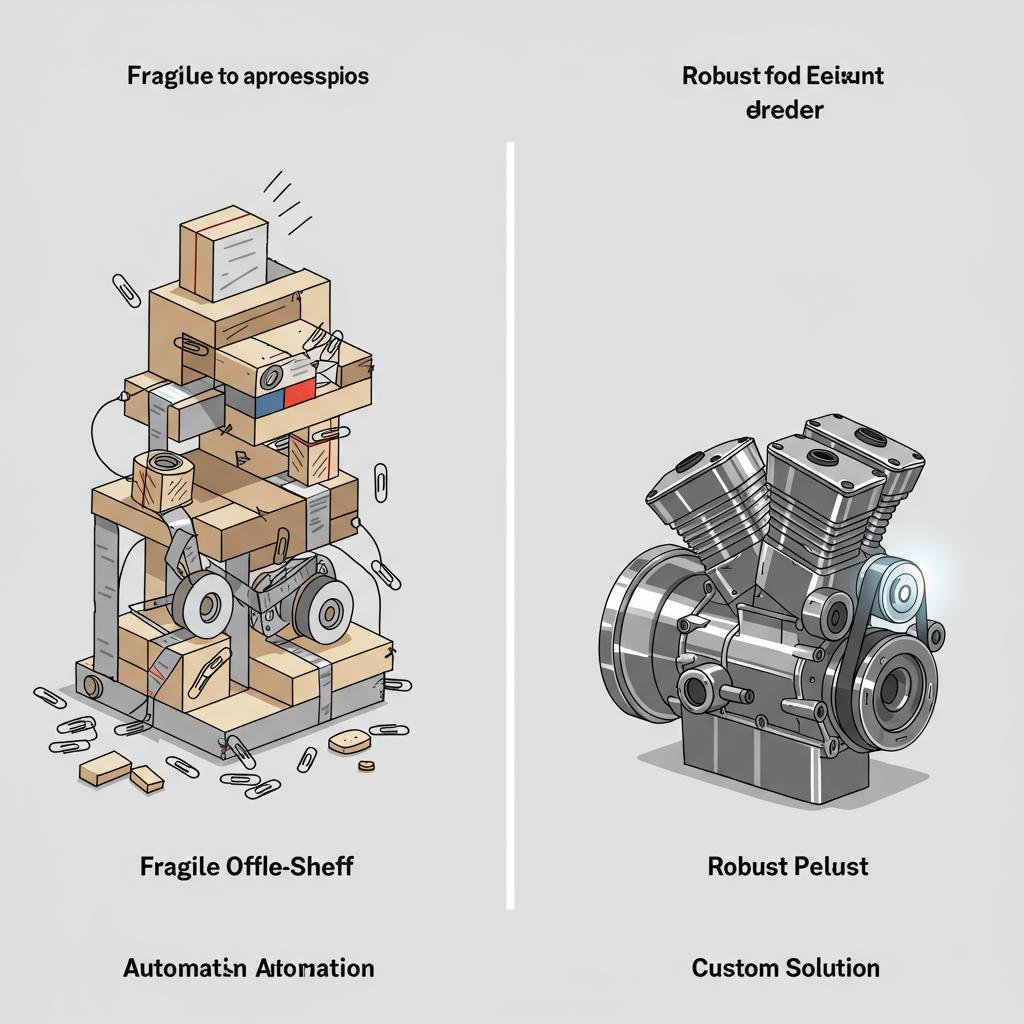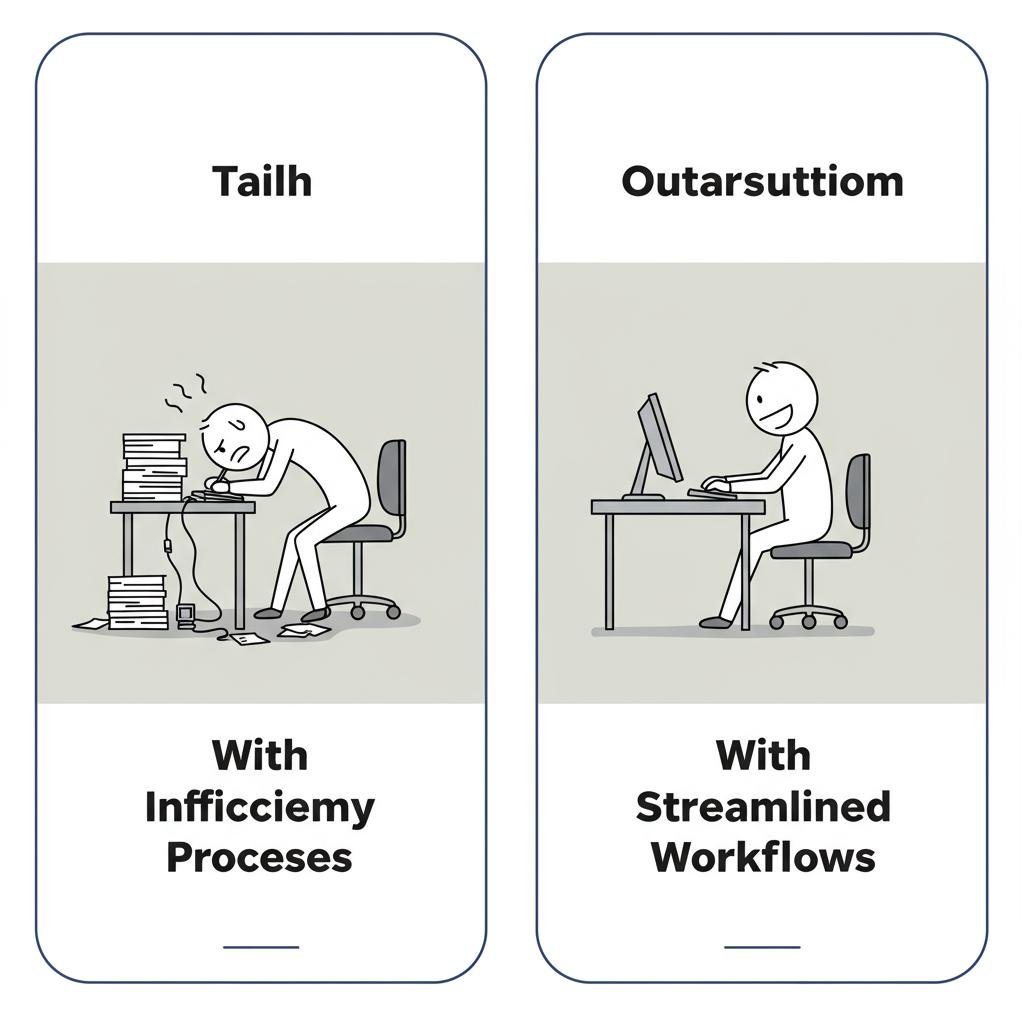7 Signs Your Business Processes Are Holding You Back (And Costing You Money)
July 5, 2025

Are inefficient workflows and manual tasks slowing your growth? This article identifies 7 critical signs that your business processes are hindering productivity and profitability, and outlines the strategic path toward robust, scalable automation.
The Invisible Anchor: Is Your Business Stuck in First Gear?
Every manager and founder knows the feeling: you’re working harder than ever, but growth has stalled. The culprit is often invisible—a tangled web of inefficient internal processes that act as an anchor on your progress. These aren’t just minor annoyances; they are silent profit killers. They lead to wasted hours, frustrated employees, and missed market opportunities, directly impacting your bottom line.
This article serves as a diagnostic tool. We’ll uncover the 7 most common signs that your workflows are actively working against you. More importantly, we’ll explore how addressing them isn’t just an operational improvement, but a strategic investment in your company’s future.
Sign 1: Your Team is Drowning in Repetitive Manual Tasks
The most obvious symptom is when you see key employees spending hours on mind-numbing work: copy-pasting data between systems, manually generating the same weekly reports, or shuttling information between software that doesn’t communicate.
The business impact of this is profound. This isn’t just wasted time; it’s high-cost labor spent on low-value work. It pulls your best people away from innovation, strategy, and client-facing activities that generate revenue. If you calculate the weekly hours your team loses to these tasks and multiply it by your average employee cost, the resulting number will be shocking. The strategic fix is clear: true automation eliminates these tasks entirely, freeing up your valuable human capital for work that matters. This is the first, most tangible ROI you can achieve.
Sign 2: ‘Data Silos’ Are Your Source of Truth
Does this sound familiar? Customer data lives in the CRM, sales figures are in a dozen spreadsheets, and project statuses are tracked in a separate management tool. To get a complete picture of a single client or project, your team has to embark on a manual, error-prone scavenger hunt.
When data is fragmented like this, you have no single source of truth. This leads to poor decision-making based on incomplete information, embarrassing customer service mistakes, and missed cross-sell or upsell opportunities. You can’t be agile if your data is trapped in silos. The strategic fix is to implement a unified backend system that integrates these disparate tools. This creates a single, reliable source of truth, enabling real-time insights and confident, data-driven decisions.

Sign 3: Your Processes Can’t Scale with Your Success
A workflow that worked perfectly for 10 clients a month is now breaking down completely at 100. Onboarding a new customer or employee has become a chaotic, manual scramble that pulls multiple people off their core responsibilities.
This inability to scale is a direct cap on your growth. It forces you into a terrible choice: either turn down new business or hire frantically just to keep up with the operational drag, destroying your profit margins in the process. Growth requires systems built for scale from the ground up. The strategic fix involves implementing production-ready, scalable solutions—often built with high-performance technologies like Go and Rust—that can handle increasing volume without faltering. This ensures your operations can keep pace with your ambition.
Sign 4: Your ‘Automation’ is a Brittle House of Cards
You’ve tried to solve the problem by duct-taping together multiple off-the-shelf tools, perhaps through complex Zapier or Make.com chains. The problem is that when one small thing changes—an application’s API updates, a field name is altered—the entire workflow breaks.
The business impact is that your ‘automation’ becomes a source of anxiety and unreliability, the exact opposite of its intended purpose. It creates constant, high-stakes firefighting for your most tech-savvy employees, who become the unwilling guardians of this fragile system. While no-code tools are great for simple tasks, serious business processes require robust, custom-built solutions. A dedicated backend service provides a stable, maintainable, and powerful alternative that you own and control, moving you from fragility to resilience.

Sign 5: Employee Morale is Low and Burnout is High
Your best people are visibly frustrated. You hear them complain about “clunky software,” “pointless paperwork,” and having to do the same thing over and over. You may even see a high turnover rate in roles that are heavy on administrative tasks.
Don’t underestimate the business impact of this. The cost of recruiting, hiring, and training to replace a skilled employee is enormous. Beyond that, low morale kills productivity and stifles innovation. Great people want to solve great problems, not fight with bad tools every day. The strategic fix is to realize that investing in streamlined workflows is a direct investment in your team. Providing them with efficient, purpose-built tools shows you value their time and talent, which is one of the most powerful ways to boost morale and retention.

Sign 6: Frequent ‘Human Error’ is Blamed for Problems
Costly mistakes keep happening. Incorrect invoices are sent out, wrong orders are shipped to customers, and critical deadlines are missed. When you investigate, the root cause is frequently attributed to simple “human error.”
The danger here is that blaming people masks the real issue: a flawed process that makes errors not just possible, but inevitable. This erodes trust and creates a culture of blame rather than a culture of continuous improvement. The strategic fix is to design systems that make it hard to do the wrong thing. Well-designed automated workflows don’t allow for common errors. By building validation, checks, and seamless data transfer into the process itself, you can virtually eliminate entire classes of mistakes.
Sign 7: A Lack of Visibility is Slowing You Down
When you ask for a key metric like, “What’s our customer acquisition cost this month?” or “What’s our current team capacity?”, the answer is, “I’ll have to pull some reports and get back to you in a few days.” There is no real-time dashboard for your business’s health.
In today’s market, speed is a competitive advantage. If you can’t see a problem or an opportunity in real-time, you can’t react to it. Your competitors who can see their data clearly will win. The strategic fix here reveals the ultimate goal of process improvement: it’s not just about efficiency, but about clarity. A well-architected backend doesn’t just automate tasks; it surfaces critical data into actionable dashboards. This provides the C-suite with the immediate visibility needed to steer the ship effectively.
From Bottleneck to Breakthrough: The Path to Operational Excellence
If you recognized your business in several of these signs, you’re not alone. But awareness is the first and most critical step. The cost of inaction—measured in lost revenue, stunted growth, and employee churn—is far greater than the investment in a real solution.
The answer isn’t another off-the-shelf app or a more complex spreadsheet. The answer is a strategic approach to your operational core. It lies in building robust, custom automation and backend systems designed specifically to solve your unique business challenges and scale with you.
By partnering with experts who specialize in creating these production-ready, scalable solutions, you can transform your biggest operational headaches into your greatest competitive advantages. It’s time to stop being held back and start building for the future.